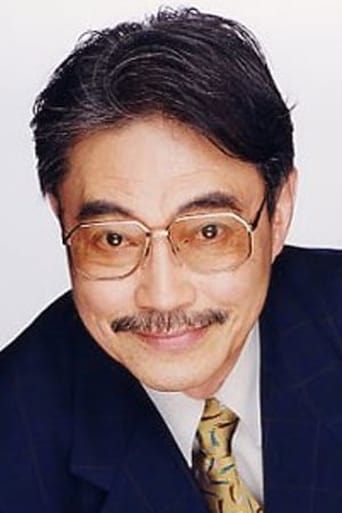ElMaruecan82
Having watched clips from the 1973 musical adaptation, boy, was I disappointed by the infamous split-up scene between Tom and his sweetheart Becky Thatcher, caused by his first mention of previous fiancée Amy Lawrence. Becky (Jodie Foster) gets up and leaves Tom (Johnny Withaker) who looks more annoyed than upset. In ten seconds, the case is closed. It works more dramatically in the 1980 anime. Tom and Becky discuss on the grass. One thing leading to another, Tom asks her to be his fiancée. Not quite reluctant, she gives her cheek, which he kisses. It's a cute moment that captures children's innocently mature perceptions of relationships. Happily, Tom then gives Becky a bunch of flowers and while she's enjoying the magic of the moment, he mentions Amy and the harm is done. He mumbles, she throws the flowers at his face and runs away, crying. Tom would weep later, in his bedroom, after having contained himself during the dinner. And it's impossible, not to feel this sadness, enhanced by a beautifully poignant flute tune. And that's how the anime is superior to the film, or any other adaptation. It doesn't just tell stories or anecdotes, like even the novel does, it awakens emotions like joy, sadness and terror, in a blending of narrative genres: drama, adventure and romance. There are so many other great moments like the defining fence whitewashing, the trip to Jackson's Island and the emotional come-back during the funeral, the frog-jumping contest, the glorious hot-air balloon's entrance or the cemetery murder, all make 'Tom Sawyer' one of the greatest animated series. And after 750 movies reviews, I forgot that TV was also the source of cherished memories.And the first TV program coming to my mind was naturally the first to leave an indelible mark in my heart, MY childhood series, in fact, the ultimate childhood series and one of the most emblematic the 80's. This is probably the only privilege I believe people born in the late 70's and early 80's got: the Golden Age of TV animation, which we most owe to Japan, and more specifically the ambitious World Masterpiece Theater anthology. During three decades, the project consisted on adapting every year children's classics from around the world, which resulted in other unforgettable anime such as "Heidi' or "Princess Sarah", stories that couldn't match the movie format, because of their rich plots and dense universes. And Tom's universe is everything but home and school (although they're part of it): the outside world is the real thing: forests, steamboats coming down the Mississippi River, which Tom dreams to navigate once. Tom embodies all the exhilaration of childhood: thirst for adventures, friendship, courage and freedom, symbolized by that round hat, suspenders and these habits of running (the bad boys' trademark) barefoot with his friend Huckleberry Fynn, fishing some catfishes, building a cabana atop a tree or digging a treasure. The remarkable achievement of the Father of American literature was to use his own childhood backdrop to provide inexhaustible sources of adventures appealing to both children and adults.However, the series features many scenes of frontal nudity and urination, but they never looked risqué or out of place, they're just boys being boys, period. I guess today, even a cartoon like 'Tom Sawyer' would suffer from a few edit. I just hope it wouldn't go as far as cutting the scene where Dr. Robinson is killed and his corpse revealed. In fact, the show itself made a few progressive moves by sugarcoating the treatment of slaves, and made Jim more a friend to Tom, than the family's slave (although an episode was centered on slavery). Still, this is a show to be enjoyed in an adult way as the episodes make you feel like watching a movie, which says a lot about the quality of anime from that era. In 49 episodes, characters have grown on us, and we all identify with them.At home, there's the authoritarian but loving Aunt Polly who spends half the time wondering where Tom's gone; his nerdy pain-in-the-ass brother Sid, cousin Mary who's the nicest character of all. And there are the friends, Ben Rogers, the glutton, cowardly but well-meaning son of the grocery owner, Joe Harper, and Muff Potter the lovable drunk who, after being saved by Tom and Huck, tell them about the treasure: the series' obligatory connecting thread, making Injun Joe, the perfect antagonist (although Mr. Dobbins and his obsession for whipping deserves a mention). Injun Joe doesn't appear in many episodes but the effect of his presence is unforgettable. Both Tom and Huck trembles of terror or are paralyzed until he disappears, evilly laughing. They never play heroes with Injun Joe, and even rely on adults like children generally do. The Native villain contributes to one of the most terrifying episodes, starting with the on-screen murder of Dr. Robinson, causing the two witnesses to run, hide and make an oath of silence. The murder's aftermath features heartbreaking moments with Muff and Tom's traumatic nightmares finally leading him to testify against Joe, who literally jumps at him before running away, leaving Tom in the arms of Muff, in tears. During these life-and-death situations, 'Tom Sawyer" is as thrilling as a movie. The rest of the time, it's a wonderful show served by a gallery of endearing characters, terrific soundtracks... and I still wonder how I ended up being such a Sid, while Tom was my hero.And less a hero because of the adventures than the little touches … like his reconciliation with Becky after a 8-episode break-up. Tom takes the blame for having torn the page of Mr. Dobbins' biology book although it was Becky, earning himself the whip of his life. Everyday courage, that's the stuff heroes are made of, and Becky knew it.And 'Tom Sawyer' is the stuff great shows are made of, and today's kids should know it, or him.





